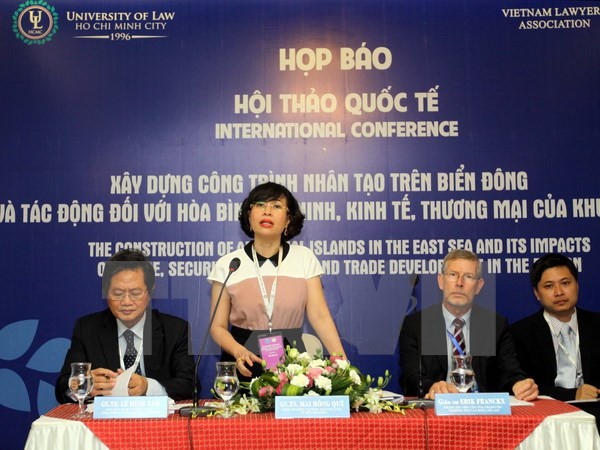(VOVworld) – An international conference opened in HCM city on Saturday to discuss the building of artificial facilities in the East Sea and its impacts on regional peace, security, economics, and trade. Scholars, scientists, lecturers from Vietnam, Russia, India, Indonesia, Japan, the Philippines, and belgium attended the event. The first session discussed legal aspects concerning artificial island and facility construction in line with the 1982 UN Convention on the Law of the Sea. Speakers related their reports to China’s artificial island construction on islands of the Truong Sa archipelago and said that China’s act runs against international law, the 1982 UNCLOS, and political commitments between Vietnam and China and between ASEAN and China. They said that it seriously affects peace, security, economics, trade, and freedom of navigation and aviation, destroys the marine environment, and increases risks of an arms race. Doctor Ngo Huu Phuoc from the HCM city Law University said: “The goal of China’s artificial island building is to carry out a roadmap of 5 steps: attack, occupy, build artificial islands, make a 12-nautical-mile claim, and take residents to those islands. It will make claims in other sea areas and link outpost islands from Hainan to Hoang Sa and Truong Sa in order to be in full control of the East Sea in terms of navigation and the marine economy.”
 |
The second session touched on the impacts of artificial island and facility construction on regional peace, security, economics, and trade. Delegates determined the negative impacts of China’s artificial island building in the East Sea and its impacts on peace, security, economics, the environment, and navigation and aviation in the region.